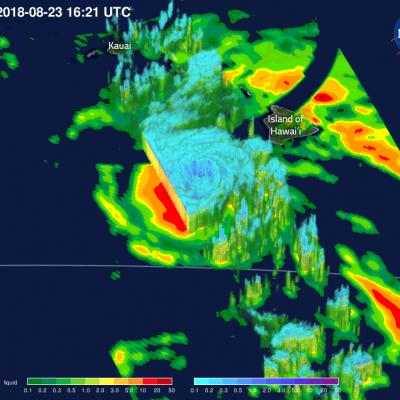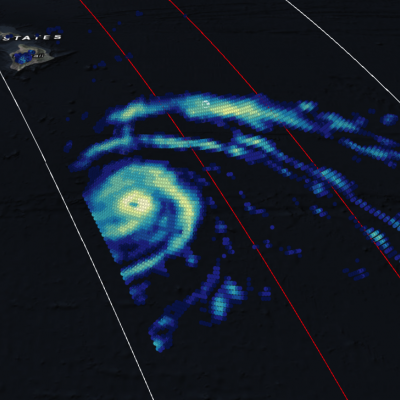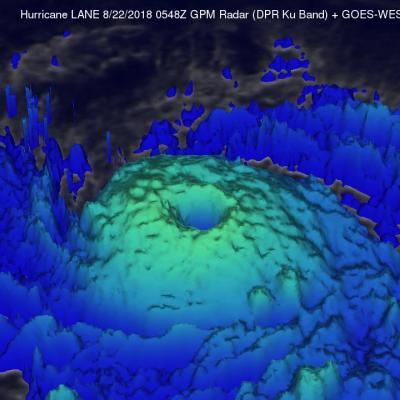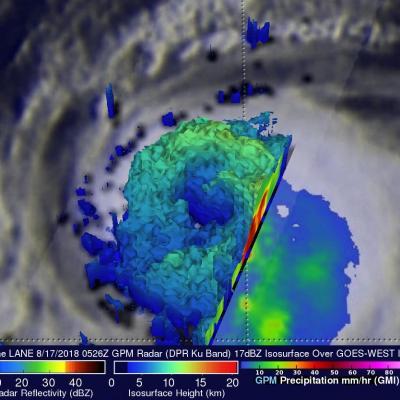GPM Captures Cat. 4 Hurricane Lane Passing Close to Hawaiian Islands
View Fullscreen in STORM Event Viewer Battling increased vertical shear, Hurricane Lane struggles northward, down from its Category 5 peak but still featuring winds of over 110 knots. The storm has already begun impacting the Hawaiian Islands, bringing over a foot of rain to Hilo via its outer bands. Lane is expected to continue northward, approaching the island chain, before slowly veering westward as it continues to lose strength. This weakening will not diminish its likely primary impacts, which will be intense coastal erosion and damage and torrential rainfall, upwards of 30 inches in some






